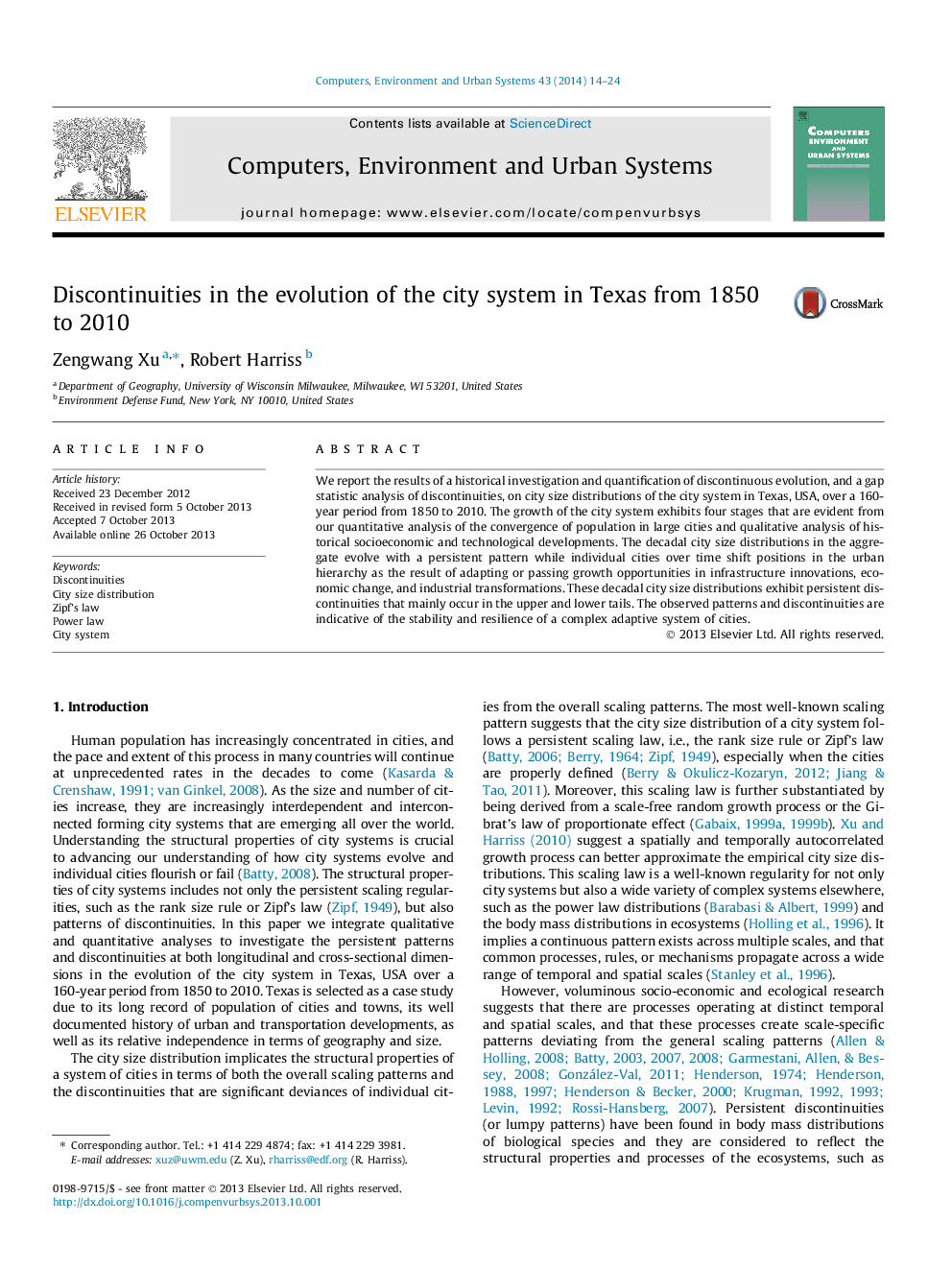| Article ID | Journal | Published Year | Pages | File Type |
|---|---|---|---|---|
| 506288 | Computers, Environment and Urban Systems | 2014 | 11 Pages |
•We examine the discontinuities in the evolution of cities in Texas, USA from 1850 to 2010.•The growth of Texas cities exhibits four stages based on qualitative and quantitative analyses.•Discontinuities occur mainly at the upper and lower tails of the city size distributions.•Medium size cities are more continuous.
We report the results of a historical investigation and quantification of discontinuous evolution, and a gap statistic analysis of discontinuities, on city size distributions of the city system in Texas, USA, over a 160-year period from 1850 to 2010. The growth of the city system exhibits four stages that are evident from our quantitative analysis of the convergence of population in large cities and qualitative analysis of historical socioeconomic and technological developments. The decadal city size distributions in the aggregate evolve with a persistent pattern while individual cities over time shift positions in the urban hierarchy as the result of adapting or passing growth opportunities in infrastructure innovations, economic change, and industrial transformations. These decadal city size distributions exhibit persistent discontinuities that mainly occur in the upper and lower tails. The observed patterns and discontinuities are indicative of the stability and resilience of a complex adaptive system of cities.
